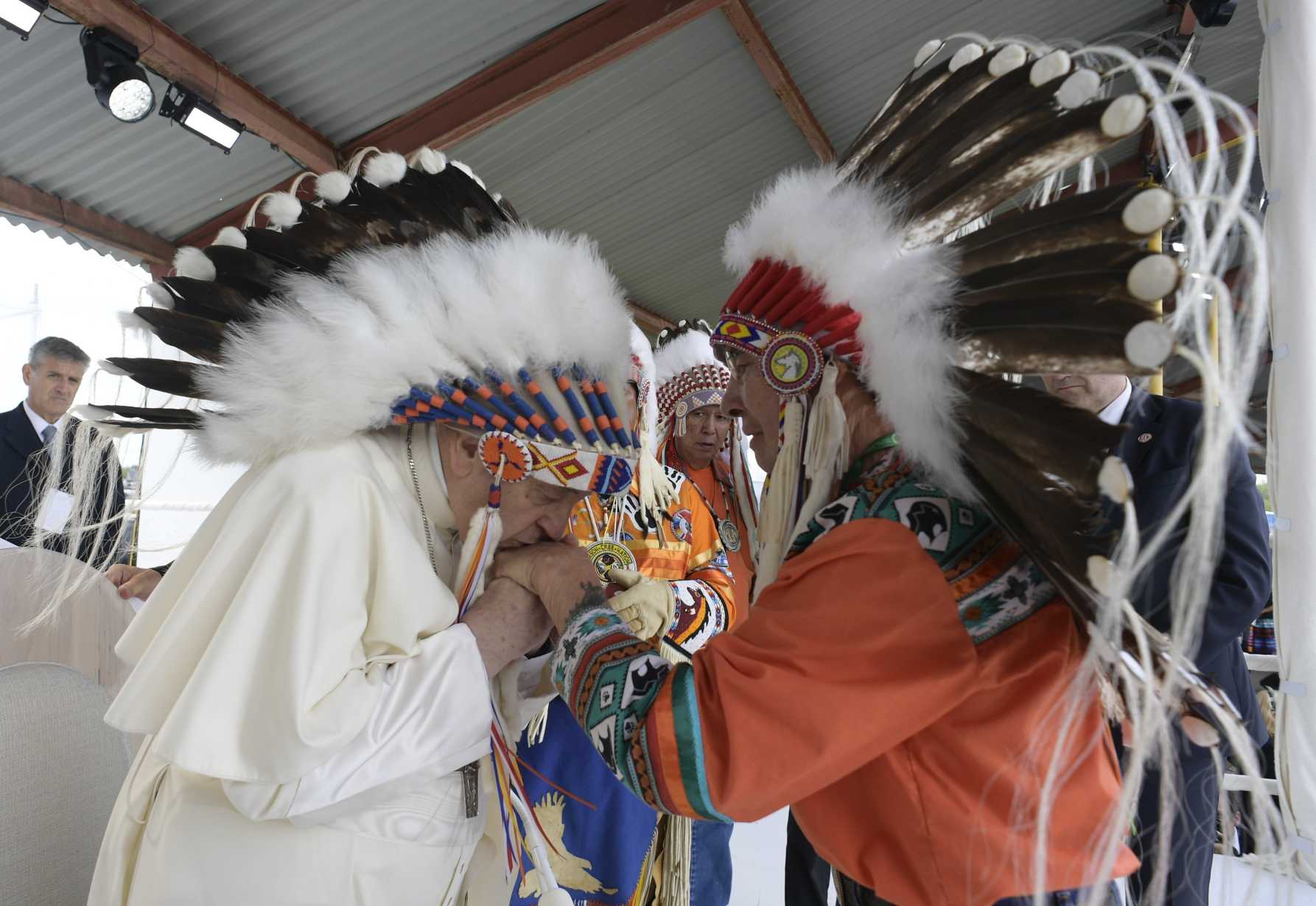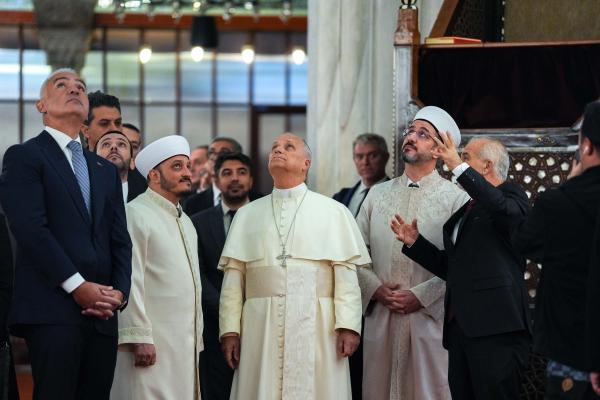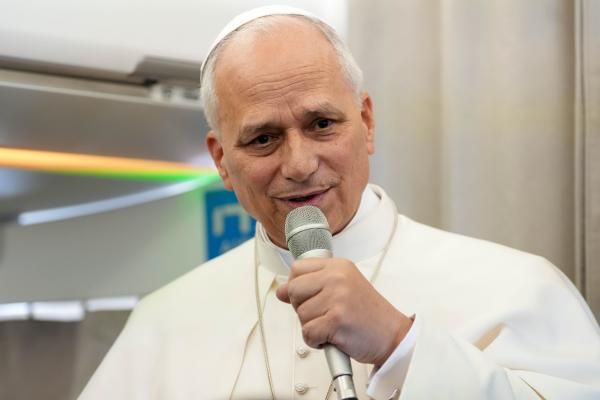Pope returns Indigenous artifacts from Vatican Museums to Canada
The return of the artifacts is the latest step in a long process to promote reconciliation between the Catholic Church and Indigenous communities.
 Cindy Wooden
Cindy Wooden

Pope Francis kisses the hand of an Indigenous leader as a sign of respect during a meeting with First Nations, Métis and Inuit communities at Maskwacis, Alberta, July 25, 2022. (CNS photo/Vatican Media)
VATICAN CITY (CNS) -- Pope Leo XIV fulfilled a promise made by the late Pope Francis to return to Canada's Indigenous communities artifacts -- including an Inuit kayak, masks, moccasins and etchings -- that have been held by the Vatican for more than 100 years.
The pope gave 62 artifacts to the leaders of the Canadian bishops' conference Nov. 15, the Vatican and the bishops' conference said in a joint statement.
The bishops "will proceed, as soon as possible, to transfer these artifacts to the National Indigenous Organizations," which will ensure they are "reunited with their communities of origin," said a separate statement from the Canadian Conference of Catholic Bishops.
Pope Leo "desires that this gift represent a concrete sign of dialogue, respect and fraternity," the joint statement said. "This is an act of ecclesial sharing, with which the Successor of Peter entrusts to the Church in Canada these artifacts, which bear witness to the history of the encounter between faith and the cultures of the indigenous peoples."
The artifacts, which came from different First Nation, Métis and Inuit communities, "are part of the patrimony received on the occasion of the Vatican Missionary Exhibition of 1925, encouraged by Pope Pius XI during the Holy Year, to bear witness to the faith and cultural richness of peoples," the joint statement said.
"Sent to Rome by Catholic missionaries between 1923 and 1925," it said, "these artifacts were subsequently combined with those of the Lateran Ethnologic Missionary Museum, which then became the 'Anima Mundi' Ethnological Museum of the Vatican Museums."
Members of Canada's Indigenous communities have been asking for years that the items be returned. In the spring of 2022, when community representatives visited the Vatican for meetings with Pope Francis before his trip to Canada, they visited the Vatican Museums and were given a private tour of the collection.
Pope Leo's decision to give the artifacts to the Canadian bishops instead of to the government or to an Indigenous organization "is a tangible sign of his desire to help Canada's Bishops walk alongside Indigenous Peoples in a spirit of reconciliation during the Jubilee Year of Hope and beyond,” said Bishop Pierre Goudreault, president of the Canadian bishops' conference.
In 2023, the Vatican did something similar, giving the Orthodox Church of Greece three marble fragments from the Parthenon in Athens; the church then gave the marbles to the government.
Speaking to reporters in April 2023, Pope Francis had said the Canadian artifacts would be returned.
"This is the Seventh Commandment: if you have stolen something, you must give it back," he said. What can be returned to its rightful owners should be, he added.
The return of the artifacts "is an important and a right step," Joyce Napier, the Canadian ambassador to the Holy See, told Catholic News Service.
The artifacts will go first to Canadian Museum of History in Gatineau, Quebec, she said. There, the Indigenous communities, their experts and elders will try to identify them and their provenance and determine where they should be kept.



